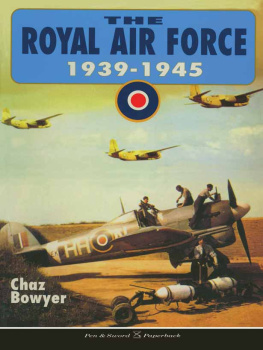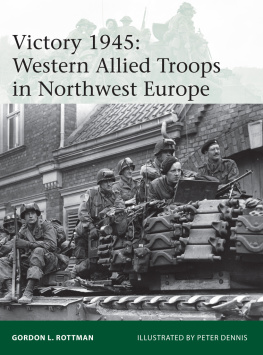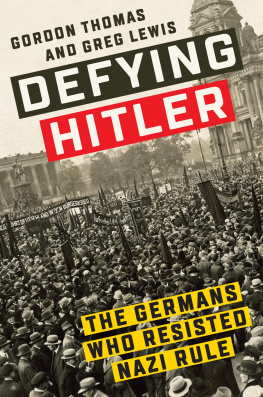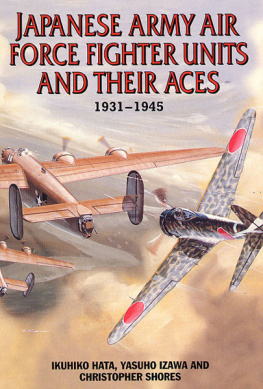T-FORCE
Also by Sean Longden
To the Victor the Spoils
Hitlers British Slaves
Dunkirk: The Men They Left Behind
T-FORCE
THE RACE FOR
NAZI WAR SECRETS, 1945
SEAN LONGDEN
CONSTABLE LONDON
Constable & Robinson Ltd
3 The Lanchesters
162 Fulham Palace Road
London W6 9ER
www.constablerobinson.com
First published in the UK by Constable,
an imprint of Constable & Robinson Ltd, 2009
Copyright Sean Longden, 2009
The right of Sean Longden to be identified as the author of this work has been asserted by him in accordance with the Copyright, Designs and Patents Act 1988
All rights reserved. This book is sold subject to the condition that it shall not, by way of trade or otherwise, be lent, re-sold, hired out or otherwise circulated in any form of binding or cover other than that in which it is published and without a similar condition being imposed on the subsequent purchaser.
A copy of the British Library Cataloguing in Publication Data is available from the British Library
ISBN: 978-1-84529-727-5
Printed and bound in the EU
Contents
Acknowledgements
There are two men whose hard work and eager assistance were fundamental in my writing of this book. These men, Ken Moore and Michael Howard, offered documents, support and guidance, giving a personal touch that went far beyond anything to be found in the reams of documents publicly available on this subject. Indeed, it was their knowledge that allowed me to make sense of the official documents most of which are somewhat confusing when viewed in isolation.
Ken Moore fought in Normandy with the Royal Artillery before being posted to the 5th Battalion of the Kings Regiment, which formed part of the infantry element of T-Force. As the editor of the units newsletter, Freelance, during 1945 and 1946, Ken Moore had a broad knowledge of this unusual unit. During the 1990s he resurrected Freelance as the newsletter for the 5th Kings/No.2 T-Force Old Comrades Association. The formation of the association was entirely due to Kens drive and enthusiasm to ensure the work of the unit was not forgotten.
As an organization, T-Force first came to my attention in 2001 when I was researching my book To the Victor the Spoils, a social history of the British Army in the last year of the Second World War. Ken invited me to a reunion in London where I listened to the tales of a number of veterans, including Tommy Wilkinson, Norman Farmer, Len White, John Longfield and Ken himself. Some of these interviews were used within To the Victor the Spoils, leading Ken to make contact with me again. Our discussions over my book resulted in his suggestion that I should consider telling the complete story of T-Force. The more I examined the subject, the more I realized this would cover a vast unknown story of the Second World War, a story that, if I did not write it now, would be lost forever. In the months that followed Ken provided me with vast numbers of documents and contact details without which I could never have completed my book.
Included among these were elements of the story of T-Forces bomb-disposal engineers as collected by Daniel Kington. Mr Kingtons grandfather, Edward Kington had served in No.19 Bomb Disposal Company. Quotations within my text from Fred Sapper Tapper are taken from Mr Kingtons research. Fundamental to my research was The T-Force Story, produced by 5th Kings/No.2 T-Force Old Comrades Association. This was privately printed by the association and formed the starting point for my research.
Since then I have attended two more reunions and travelled to the port of Kiel with a delegation from the Association. Tony Hibbert MC kindly spared four hours of his time to tell me his life story. His experiences in Germany during the 1930s, then at Dunkirk and Arnhem Bridge, gave me a great understanding of his eagerness to reach Kiel as swiftly as possible. Among others who have kindly given up their time to be interviewed by me include: Tom Pitt-Pladdy, Harry Henshaw, Tommy Wilkinson, Jack Chamberlain, Vic Woods (now deceased), Harry Bullen, Bob Brighouse, Ron Lawton, David March, Ted Tolley, Willy van der Burght and John Longfield. Through Ken I was also able to make contact with Reg Rush, a veteran of 30 Advanced Unit, Royal Marines, who worked alongside T-Force during 1945. I have also made use of an interview with the late Ken Hardy that I carried out for my book To the Victor the Spoils. At the time I had not heard of T-Force, nor realized the relevance of elements of his story.
Whilst Ken Moore was essential for establishing contacts among veterans of No.2 T-Force, Michael Howard played a similar role for No.1 T-Force. During 1946 and 1947, as a rather young captain, Michael had run the Intelligence Office for No.1 T-Force. Without his input my study of the postwar period would have been seriously hampered. Not only did he provide me with introductions to his former comrades but he offered advice and guidance on documents and his own clear memories of the period. His studies of T-Force activities in the Ruhr, carried out over many years, both enlightened me and shaped my final chapters. Numerous email exchanges also helped to clear up many areas of confusion and I have liberally quoted from Michaels messages. Michael also introduced me to other veteran officers including Tony Lucas and John Bendit, both of whom had served as subalterns at No.1 T-Force. Michael also kindly put me in touch with Julia Draper (formerly Jean Hughes-Gibb) who was the first civilian on the staff at T-Force HQ and shared both her wartime and postwar memories with me.
I have also been fortunate enough to receive assistance from Jane Weston, the daughter of Admiralty scientist John Bradley, who kindly provided her fathers photographs and letters detailing his experiences as a scientist attached to T-Force. In exchange, I was able to offer her information on her fathers role with T-Force, about which she had previously known little. Mrs Ruth Lambert, widow of Major George Lambert MC, kindly provided photographs of her husband and a copy of his written memoirs. My thanks must also go to Renate Dopheide of the Kiel archives whose own book on the events in Kiel in 1945 provided a valuable German perspective. I must also thank Margrete Thorsen-Moore, Ken Moores wife, for providing me with a translated copy of Renates book.
Unless otherwise stated, the quotations used within the text come from interviews I carried out with these veterans of T-Force or the correspondence supplied to me via veterans of the unit and their families.
I must also offer thanks to my editor Leo Hollis and my agent Andrew Lownie, both of whom have offered support throughout this project. My thanks also go to Sam Evans and Hannah Boursnell at Constable for their hard work on my previous book, Dunkirk: The Men They Left Behind, and to the Constable sales team for helping make that book a success. As ever, thanks to Beth and Bethan at MGA for all their efforts to ensure effective publicity.
List of Illustrations

Key Expeditions by the T-Force Units, March to May 1945
Introduction
Headquarters of 8 Corps, outside Hamburg, Germany,
5 May 1945
The major was in no mood for waiting. The war may have been drawing to a close but he was eager to move his men forward. In fact, despite the inactivity around him and the Stop Order issued to all British units in Germany, he had specific orders to advance. They came directly from the Allied High Command he had his instructions and intended to follow them.








